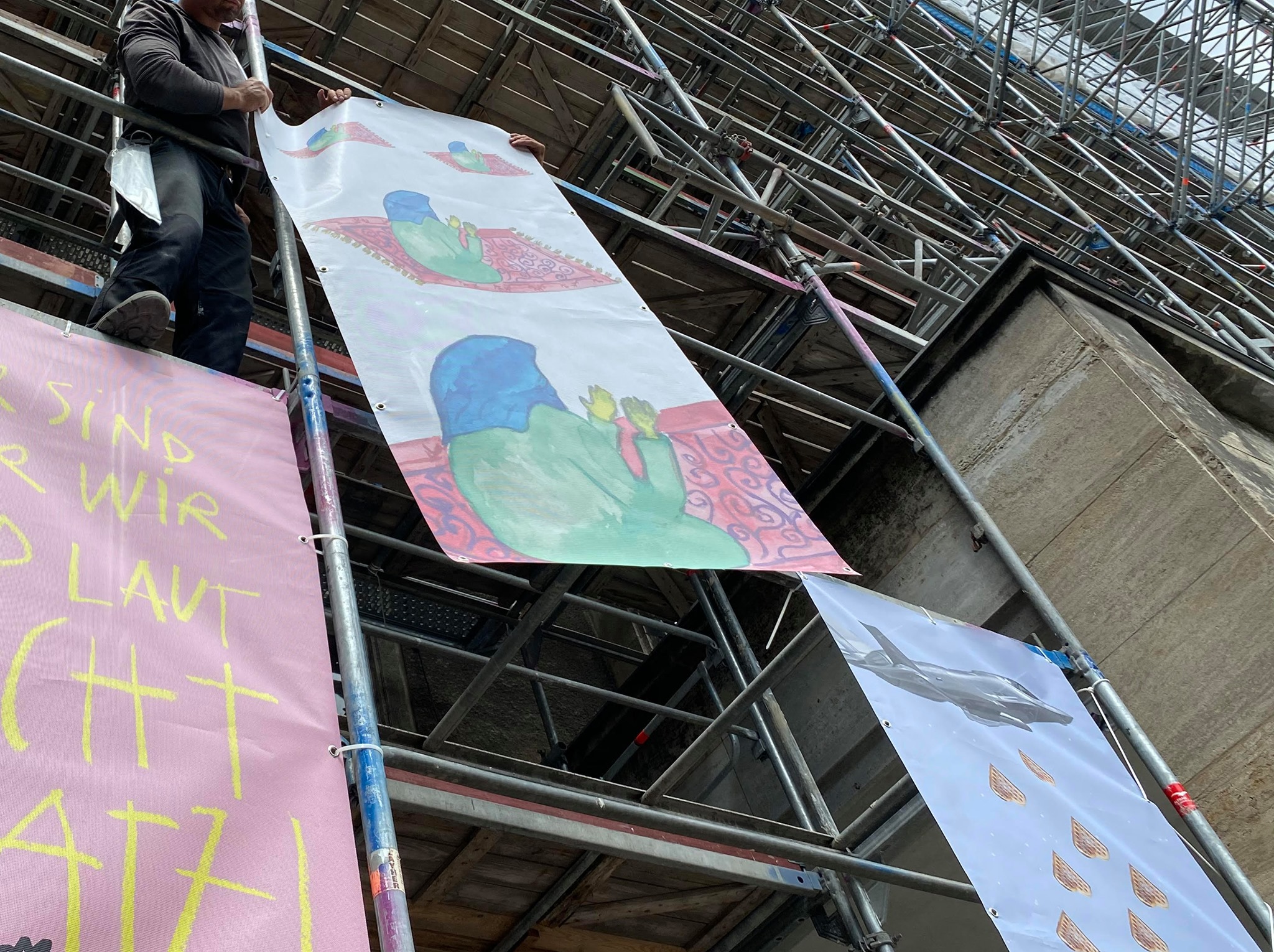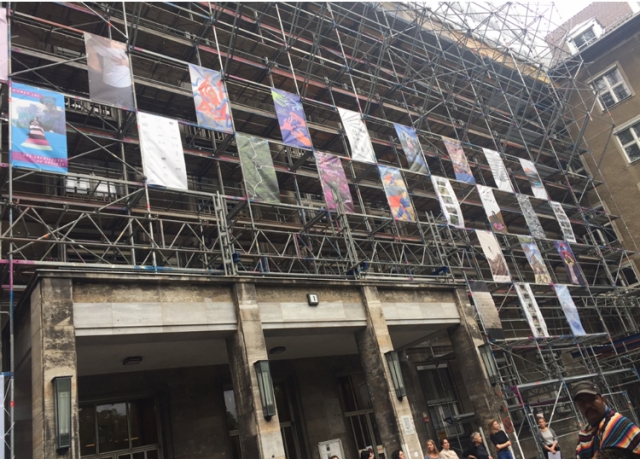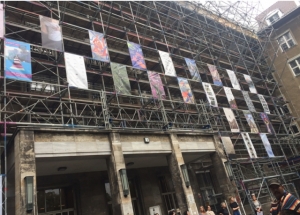The Economy of Borders - Poster Exhibition on Facade of Town Hall in Heart of Berlin
“The women who are most affected by war, poverty, displacement and the nationalist politics of states have the least chance of moving across borders. We know that borders are the origin of war. War is the fuel of prosperity. Women only benefit from this prosperity to a limited extent and only if they submit to the existing order. Instead of regressive narratives of division and polarization - a socio-political doctrine of love for diversity and a deep understanding of solidarity! Let's start together!” This introduction to the exhibition The Economy of Borders curated by artists Marina Naprushkina and Joulia Strauss spoke to the majority of people assembled in front of the Tiergarten Town Hall of Berlin's Moabit district on June 9, 2020. Unlike most openings the public launch of the Town Hall Facade Poster exhibition was conceived as an open assembly discussion inviting passers-by and the invited guests to engage in a dialogue about the problems of borderlines, divided lives, and devastated economies.
The event gave the voice to the voiceless: women on the run, fleeing wars, political persecution, ethnic cleansing or home violence. Invited artists Kathleen Kunath and Johanna Scherf read texts written in the first person, thus impersonating and describing the sufferings that the refugee and migrant women experience due to closure of borders.

The Economy of Borders is not a commonplace exhibition but an expression of artistic activist practice typical of the work of Marina Naproushkina and the Neue Nachbarschaft/Moabit, a neighborhood initiative founded by her in the same Moabit district that is a gathering space for learning and meeting for migrants and the natives from the neighborhood.
Transforming a facade of a municipal public institution into an art space with an open message to everyone is a gesture of political goodwill made by artists in the times of crisis where politicians fail. Historically facades of public institutions have been representing the political will of ruling ideologies carved in stone. Traditionally this message glorified wars led by militant ruling regimes. The building of the Rathaus Tiergarten on the Mathilde-Jacob-Platz in the heart of Berlin is no exception: built in 1936-37, it is a typical representative architecture of the National-Socialist Regime, was used as such during the Nazi rule and its architectural form represents the National-Socialist claims of political dominance expressed in the formal vocabulary typical for the Nazi regime architecture of the time.
Mounting a message of inclusion and solidarity on such a facade is therefore a symbolic gesture that reminds us that the history of violence should not repeat and that those who are worst affected by it are the least protected. The posters made by women artists and activists communicate their message in word and image, speaking the language of art that is understandable irrespective of all borders. The participating female artists from various conflict-affected countries of former Soviet Union, Middle East, Germany and the rest of the world are migrants themselves and /or symbolically represent women refugees separated from their families due to closure of borders. As for example Uma Gadziev from Dagestan. She made a poster based on a drawing from her book “Grandmother,” that she made together with her two sons as a birthday gift for her mother whom she hasn't seen for the last 6 years. Uma lives in Berlin and asked for asylum.
The Economy of Borders is part of the Institutions Extended Program initiated by Marina Naproushkina. The exhibition is on until 10 July 2020, and is accompanied by a four-week online marathon where the participants will make daily contributions referring to their work, the socio-political situation, and their political demands.
By Lily Fürstenow-Khositashvili












